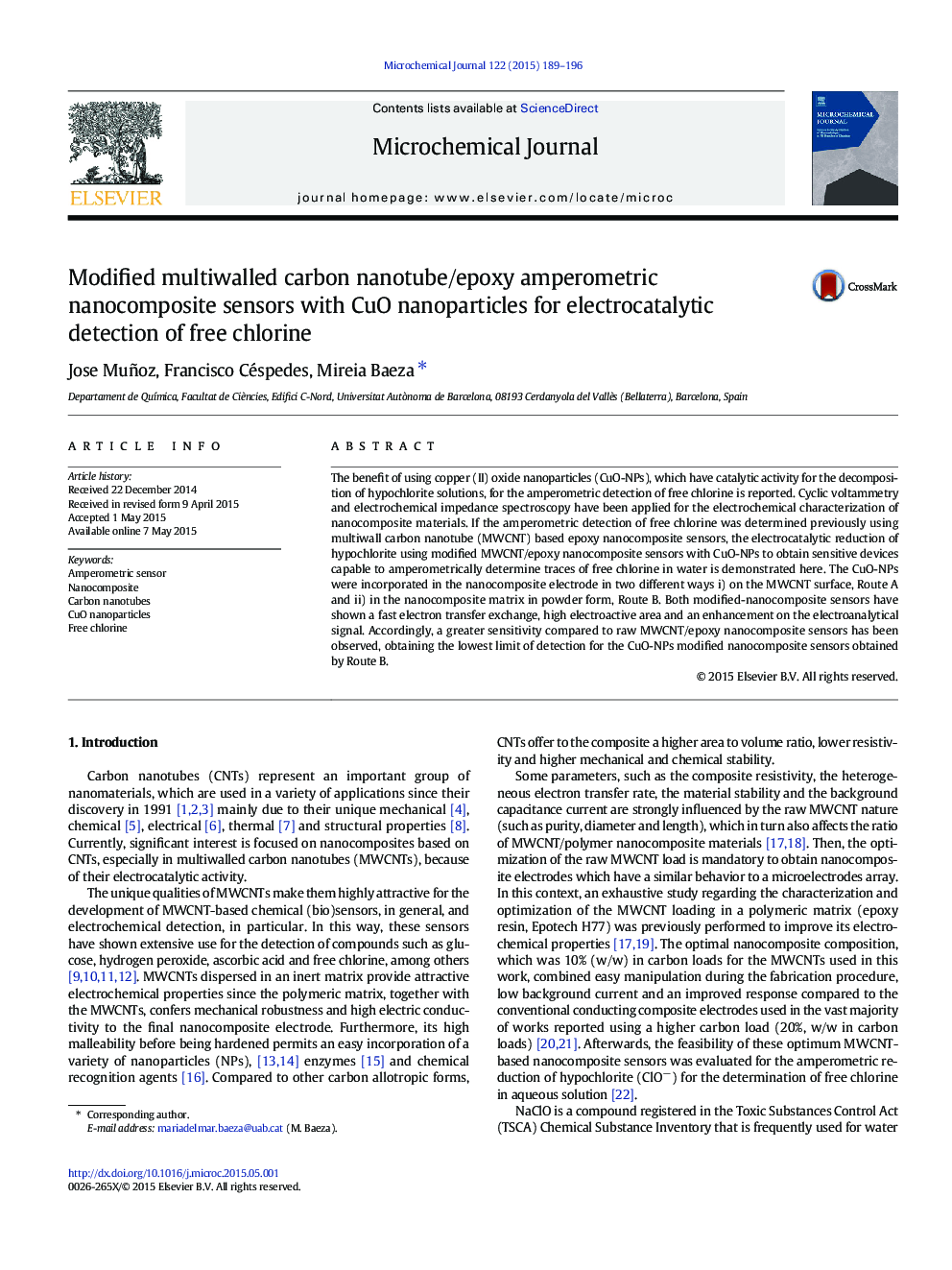| Article ID | Journal | Published Year | Pages | File Type |
|---|---|---|---|---|
| 1227778 | Microchemical Journal | 2015 | 8 Pages |
•Synthesis and incorporation of CuO-NPs in MWCNT/epoxy nanocomposite electrodes by two different routes.•Electrocatalytic effect of CuO-NPs on free chlorine detection.•EIS and CV for the electrochemical characterization of the modified nanocomposite material.•Sensors containing CuO-NPs achieve significant improvements on analytical signal for free chlorine detection.
The benefit of using copper (II) oxide nanoparticles (CuO-NPs), which have catalytic activity for the decomposition of hypochlorite solutions, for the amperometric detection of free chlorine is reported. Cyclic voltammetry and electrochemical impedance spectroscopy have been applied for the electrochemical characterization of nanocomposite materials. If the amperometric detection of free chlorine was determined previously using multiwall carbon nanotube (MWCNT) based epoxy nanocomposite sensors, the electrocatalytic reduction of hypochlorite using modified MWCNT/epoxy nanocomposite sensors with CuO-NPs to obtain sensitive devices capable to amperometrically determine traces of free chlorine in water is demonstrated here. The CuO-NPs were incorporated in the nanocomposite electrode in two different ways i) on the MWCNT surface, Route A and ii) in the nanocomposite matrix in powder form, Route B. Both modified-nanocomposite sensors have shown a fast electron transfer exchange, high electroactive area and an enhancement on the electroanalytical signal. Accordingly, a greater sensitivity compared to raw MWCNT/epoxy nanocomposite sensors has been observed, obtaining the lowest limit of detection for the CuO-NPs modified nanocomposite sensors obtained by Route B.
